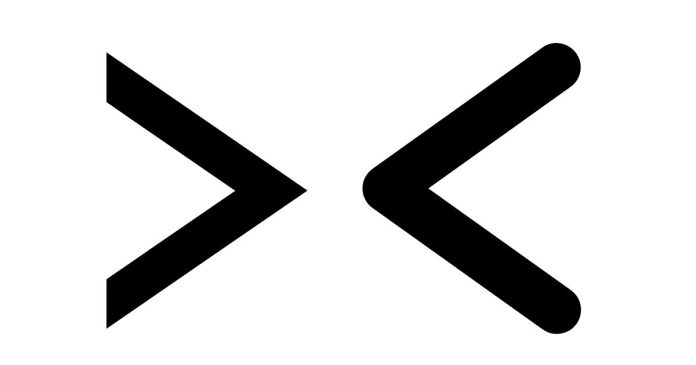The symbols for “greater than” (>) and “less than” (<) can sometimes be confusing at first, but there are several mnemonic techniques and visual aids that can help you remember which is which. Here’s a detailed explanation:
1. The Visual Shape Method:
One of the easiest ways to remember the greater-than (>) and less-than (<) symbols is to visualize them as an open mouth:
- Greater than ( > ): Imagine the symbol as a mouth that is open to the right, like a person ready to eat something larger. The larger number is always on the left, and the smaller number goes on the right.
- For example, 5 > 3 means 5 is greater than 3.
- Less than ( < ): Similarly, the less-than symbol is the opposite, where the “mouth” is open to the left, indicating that the smaller number is on the left, and the larger number is on the right.
- For example, 3 < 5 means 3 is less than 5.
2. Mnemonic Devices:
There are several mnemonic phrases and tricks to reinforce the visual method:
- “The alligator eats the bigger number”: Think of the symbol like an alligator’s mouth. The “greater than” symbol ( > ) is the alligator’s open mouth, and it “eats” the larger number.
- Example: 6 > 3 → The alligator eats 6 (the greater number).
- “The small side points to the small number”: The pointy end of the less-than symbol (<) is at the smaller number, and the wider part points to the larger number.
- Example: 2 < 5 → The pointy side of the symbol is at 2 (the smaller number), and the wider side points to 5 (the larger number).
3. The Number Line Method:
Another helpful way to remember the symbols is by using a number line. The number line is a visual representation of numbers from left to right:
- As you move from left to right on a number line, the numbers increase (get larger).
- The greater-than symbol ( > ) points to the larger number, and the less-than symbol ( < ) points to the smaller number.
For example:
- On a number line: 3 < 5, which means 3 is to the left of 5 (smaller).
- 7 > 4, meaning 7 is to the right of 4 (larger).
4. Using the Concept of “Opening” and “Pointing”:
The “mouth” analogy is easy to apply when thinking about how the symbols open or point:
- Greater than ( > ): The symbol opens to the right (like a greater-than sign points to the larger number).
- Less than ( < ): The symbol points to the left (the smaller number).
5. Comparing the Symbols:
Here’s a quick comparison between the two symbols:
- Greater than ( > ): The wide part of the symbol is on the left, and it “opens” towards the greater number.
- Example: 9 > 6 (9 is greater than 6).
- Less than ( < ): The point of the symbol is on the left, and it “opens” towards the smaller number.
- Example: 2 < 8 (2 is less than 8).
6. Additional Visual Aids:
If you’re working with a series of numbers and are unsure which symbol to use, here’s a quick guide:
- For greater than, imagine the symbol as the greater side of an angle: >.
- For less than, imagine the symbol as the smaller side of an angle: <.
7. Examples for Clarity:
- 4 > 2: 4 is greater than 2 (the symbol “opens” toward 4).
- 8 < 12: 8 is less than 12 (the symbol “opens” toward 8).
Conclusion:
To remember which symbol is for “greater than” and which is for “less than,” the mouth analogy (the open side points to the larger number) is one of the most effective methods. Additionally, visualizing them as part of a number line or using the idea of the “alligator” eating the larger number can also reinforce the concept. By regularly practicing these methods, you’ll become more confident and quick in identifying the correct symbol when comparing numbers.


